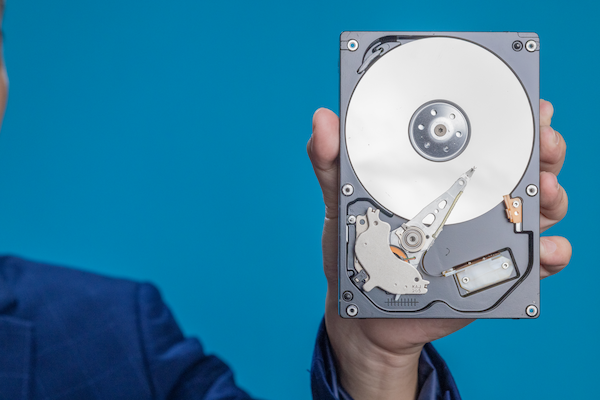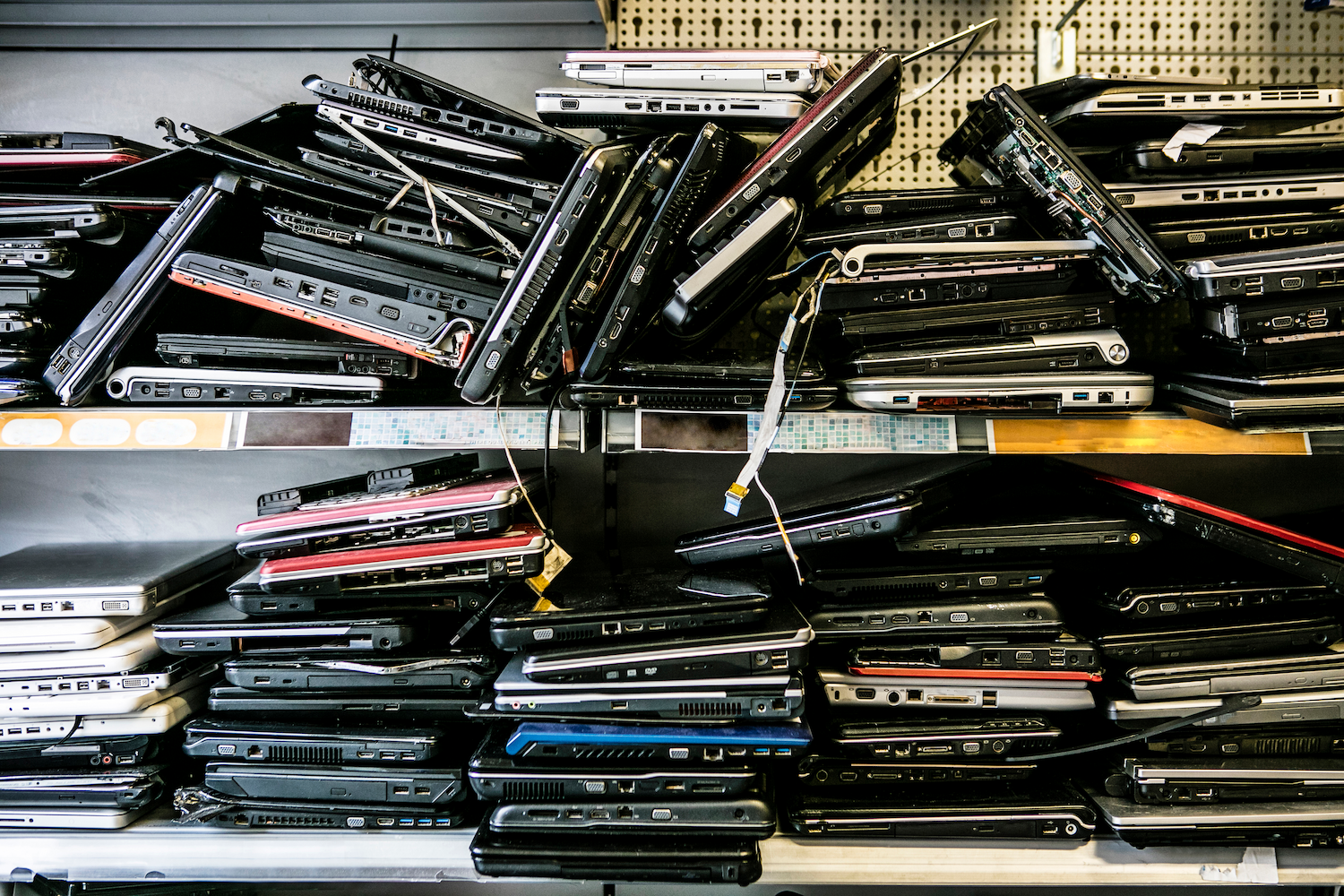In today’s tech-driven world, IT asset management is more than just keeping track of hardware. It’s about reducing your liability, protecting sensitive data, and ensuring your business stays compliant with regulations.
Poor IT asset management can lead to data breaches, legal trouble, and significant financial losses. That’s why every business, big or small, needs a strategy.
In this blog, we will explain the importance of IT asset management and give you a few tips to help you get started.
Definition Of Liability In IT Asset Management
Liability in IT asset management refers to the legal, financial, and reputational risks associated with improper handling, storage, and disposal of technology assets.
This includes:
- Data breaches from unsecured devices
- Environmental penalties for improper electronic disposal
- Non-compliance with industry-specific regulations
- Lost or untracked hardware
So why does it matter?
Importance Of Reducing Liability For Businesses
Reducing liability in IT asset management is more than just a best practice; it’s a business imperative. The consequences of mishandling outdated or unused IT equipment can be far-reaching.
Financial
Data breaches, regulatory fines, and the cost of lawsuits or remediation can cost companies millions. Proactive IT asset management helps avoid these unexpected expenses by ensuring secure handling and disposal.
Legal
Businesses are required to follow strict local, national, and industry-specific regulations concerning data protection and electronic waste. Failing to meet compliance standards like HIPAA, GDPR, or state e-waste laws can lead to significant legal trouble.
Environmental
Improper disposal of electronics can harm the environment through the release of toxic substances. Responsible recycling through certified providers ensures hazardous materials are handled safely and sustainably.
Reputation
Customers, clients, and stakeholders expect responsible business practices. A single misstep in data security or environmental compliance can damage trust and tarnish your brand’s reputation, sometimes irreparably.
6 Effective Strategies for IT Asset Management

Here are six effective strategies every organization should adopt to manage IT assets responsibly and sustainably.
1. Comprehensive Inventory Management
The first step in effective IT asset management is knowing exactly what you have. This includes desktops, laptops, servers, phones, and even retired or decommissioned equipment.
A comprehensive inventory system helps:
- Track lifecycle status (from deployment to disposal)
- Plan for upgrades and replacements
- Prevent theft or loss
- Ensure all devices are accounted for before decommissioning
Using asset management services can take much of this process off your back and ensure everything is up to date.
2. Data Security Protocols
When IT assets reach the end of their usable life, the data on them doesn’t just disappear. Failure to properly secure or destroy data on old equipment can expose your business to serious legal and financial risks.
Before any equipment is recycled or disposed of:
- Use certified data wiping tools to ensure complete data erasure
- Consider degaussing or physical destruction for high-security devices
- Always maintain a chain of custody record
Working with a certified electronics recycler ensures data-bearing devices are handled with the highest standards of data security.

3. Proper Disposal Procedures
IT asset disposal is not just about tossing old devices in the trash. Doing so can result in hefty fines and environmental harm. Electronics often contain hazardous materials that must be processed by licensed recyclers.
Proper disposal involves:
- Working with R2-certified recyclers
- Following internal policies for decommissioning hardware
- Keeping documentation of disposal for auditing and compliance
Recycling responsibly protects your brand and the environment.
4. Legal Compliance Measures
Businesses must follow local, state, federal, and even international regulations when it comes to managing and disposing of IT assets. These laws are designed to protect sensitive information, the environment, and consumers.
Key regulations include:
- HIPAA (for healthcare)
- GDPR (for businesses handling EU citizen data)
- FACTA and GLBA (for financial institutions)
- State electronics laws in the U.S.
Partnering with an experienced IT asset disposition (ITAD) provider can help ensure you stay compliant at every step.
5. Employee Training and Awareness
Even the best systems can be undermined by human error. Your team should understand how to handle IT assets throughout their lifecycle, from procurement and use to decommissioning and recycling.
Effective training should include:
- Data protection best practices
- Secure device handling
- Reporting lost or stolen equipment
- Awareness of internal asset management policies
When everyone understands their role, your IT asset management becomes stronger, safer, and more efficient.

6. Monitor & Improve
Effective IT asset management isn’t one-and-done; it requires continuous improvement. Regular monitoring helps identify:
- Gaps in your current processes
- Emerging risks (like new regulations or security threats)
- Opportunities to streamline and improve
Use audits, key performance indicators (KPIs), and feedback loops to evolve your ITAM strategy and maintain accountability across departments.
Choosing the Right IT Asset Management Partner
When it’s time to dispose of old IT equipment or improve your asset management program, selecting the right partner is critical. Not all electronics recyclers or ITAD providers are created equal, and choosing the wrong one can expose your business to unnecessary risk.
Here are some key criteria to help you evaluate and select a trustworthy, compliant partner.
Certifications
Look for recyclers with industry-recognized certifications such as R2 (Responsible Recycling) or ISO. These certifications demonstrate a commitment to safe, ethical, and environmentally responsible practices.
Data Destruction Guarantees
Your partner should offer verifiable, certified data destruction services. Ask whether they provide certificates of data sanitization or destruction for every device processed.

Chain Of Custody Documentation
Ensure the provider maintains detailed records tracking each asset from pickup to final disposition. This audit trail protects your business in the event of a regulatory inquiry or data breach.
Environmental Practices
Ask how the provider handles components that can’t be reused or resold. A reputable partner should comply with EPA guidelines and properly dispose of hazardous materials.
Enhance Your IT Asset Management
Managing IT assets doesn’t stop at tracking devices; it extends to secure disposal, legal compliance, and minimizing liability. By implementing the five strategies above, your business can stay protected, reduce waste, and stay compliant.
Looking to responsibly dispose of your old IT equipment? Partner with Great Lakes Electronics, a certified electronics recycling company that prioritizes data security, environmental sustainability, and compliance. Let’s manage your IT, safely and smartly.
Request a quote today.

